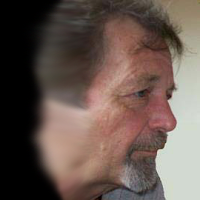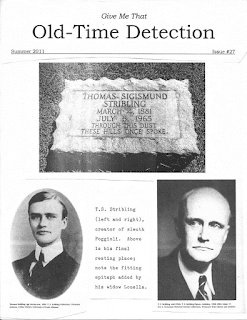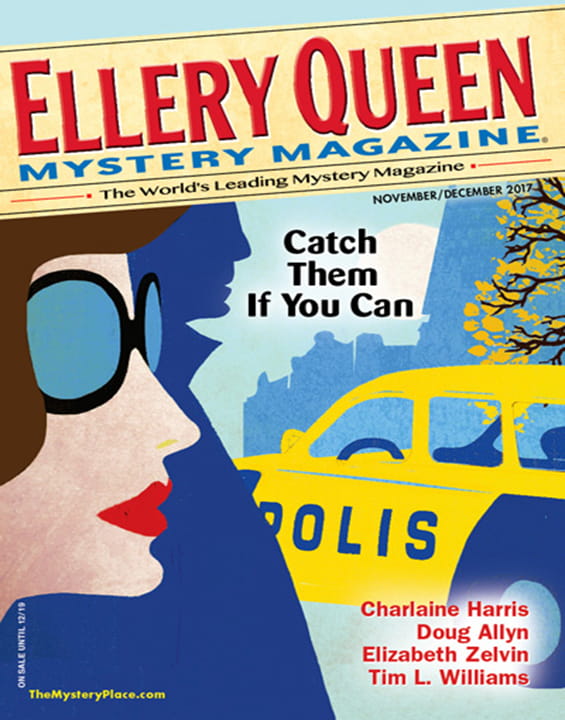 Several times in the course of past articles on SleuthSayers I have referenced my Belgian friend and occasional collaborator Kurt Sercu and his remarkable website Ellery Queen -- A Website on Deduction. In fact, in my first post I promised more about Kurt in the future. No time like the present!
Several times in the course of past articles on SleuthSayers I have referenced my Belgian friend and occasional collaborator Kurt Sercu and his remarkable website Ellery Queen -- A Website on Deduction. In fact, in my first post I promised more about Kurt in the future. No time like the present!I stumbled on to Kurt’s site sometime in 2000, when it had been on-line for about a year. As an Ellery Queen stalwart over the years I had frequently used internet search engines to look for on-line articles about Queen. Invariably those searches yielded rudimentary lists of books, or abbreviated discussions on the lives of Manfred B. Lee and Frederic Dannay, who were Queen. My expectations were therefore already low when I ran the search again in mid-2000. I was surprised when Kurt’s then-new site appeared at the top of the search list and was awed when I then visited the site. Even if you are not an Ellery Queen fan you have to be amazed by Kurt’s website. It goes on forever. But before embarking on a short tour of the site, let’s delve a bit deeper into the background of its author and proprietor
 |
| Brugge, Belgium |
 |
| Dale Andrews and Kurt Sercu, 2005 |
In the amazing world of the internet – where everyone can be everyone else’s virtual neighbor – Kurt and I first became friends during the course of an exchange of messages on the Golden Age Detective Forum, where Kurt presides over the Ellery Queen section. Since then Kurt and I have corresponded by email, often several times per week, and we have visited in person twice – once in 2005 when literally on the spur of the moment he flew to D.C. and together we attended the Ellery Queen Centenary Symposium hosted by EQMM in New York City. Thereafter, two years ago Kurt and his family vacationed in the United States and stayed with us in Washington, D.C. for one week.
But back to that website. Kurt explains there that he first became interested in Ellery Queen when he read Queen mysteries, in Dutch translation, in the 1970s.
[Then, Kurt explains,] in 1997 the net came to my house. After some time I wanted to start a website of my own. Not one with personal [reflections] but with content, content useful to the visitor. If all webmasters would do the same the net [it seemed to me could become an] interesting place to spend some time. My first idea was to start a website on Tolkien. But several sites on the subject already existed and had done a great job! So what other subject I could talk about? Well, there was [my then] small collection Queen-stories.Those stories, together with some articles Kurt had collected concerning Ellery Queen, formed the early foundation for Ellery Queen – A Website on Deduction.
[At first I] tried to "cut and paste" my way through what grew into a large volume of information. Too few sites, in my opinion, do justice to [Queen], who started off in the late twenties and [continued to write] into the seventies. He made maximum use of the media at that time and is now, I feel, grossly neglected. I hoped the site [would] fire up more interest in the Ellery Queen stories.The result of Kurt’s efforts has now grown into a near-Byzantine website. In fact, I know of no other site that is as complex, or that offers up deeper insight into its subject matter.
A word of caution – as noted above, Kurt has published two versions of the site, one in his native Dutch language and one in his second (or perhaps third or fourth) language – English. My second language is Spanish, and I do well if I can order from the menu in a Mexican restaurant. So expect a few translation difficulties, and just marvel that someone can produce such a source of information in a language that is not their native tongue.
Just as it is the best practice not to reveal “spoilers” when discussing detective fiction, so too I want to be careful not to reveal too much about Kurt’s website since, like Ellery Queen’s stories, there is much just below the surface that is best discovered by the reader working through the site at his or her own pace.
In many respects the site is half Wikipedia, half computer game. For those of you somewhat removed from the “gaming community,” there is a device used quite often in games that is referred to as the “Easter Egg." Easter Eggs are hidden messages or "in" jokes or references hidden in the course of a game. Kurt’s site is full of Easter Eggs -- click-able words that the reader will miss unless care is taken, and that, once found, will lead the reader to hidden pages from which you can tunnel deeper and deeper into the subject matter. As an example, if you dig really deep you can find my very first Ellery Queen pastiche, never published elsewhere. But it will take a lot of looking. I barely remember how to get there myself! You can also find hidden goodies such as an essay on the Queen Centenary Symposium, one click away but otherwise not referenced on the site’s menu.
It would be easy to spend a rainy day entirely entertained by Ellery Queen -- A Website on Deduction. The homepage for the site gives you most of what you need to know in order to begin your journey. While some guidance is offered below, explore the page with your cursor. Like a good fair play mystery the site holds lots of twists and turns, just awaiting discovery.
That promise aside, here is a sort of beginner’s guide to the site.
“List of Suspects” takes you to detailed essays on recurring characters in the Queen library – Ellery, the Inspector, Sergeant Velie and, among others that infrequent Secretary and almost love interest, Nikki Porter. You will also find essays on Djuna, a character in early Queen mysteries (who also figures prominently in The Book Case pastiche), and lesser luminaries -- like coroner Dr. Samuel Prouty.
“QBI” unlocks an amazing sixteen pages in which every Ellery Queen book ever written – and not just those in which Ellery appears – is discussed in detail. Kurt even provides the history of each of the works that Dannay and Lee “farmed out” to other writers in a perhaps ill conceived attempt to keep the Queen name before the reading public. (Some, including Frederic Dannay’s son Richard, have argued that this in fact hastened the demise of Queen since these later volumes are generally inferior to the works actually authored by Dannay and Lee.) While perusing these essays be sure to click on the covers of the various volumes – this will take you to even more in-depth discussions of each work.
“Kill as Directed” offers up essays on every Ellery Queen movie, comic book and television series. Clicking through the list of episodes of the first EQ television series, which aired on the ancient and largely forgotten Dumont television network, will lead you to a select few episodes that Kurt has uncovered that can be watched, in their entirety, through the website. The section also contains a full and affectionate guide to the 1975 NBC Ellery Queen series, a personal favorite, now (finally) available in a re-mastered DVD collection, and surely one of the finest fair play detective series to ever grace the small screen.
“Whodunit” contains essays chronicling the lives of Dannay and Lee. But you will also find biographical notes on every other author who ever authored a Queen work as a ghost writer. These comprise those farmed-out volumes, the Ellery Queen Jr. juvenile mystery series, and some later Ellery works that, while outlined by Dannay, were written by others during the period in which Manfred B. Lee famously suffered from writer’s block. In "Whodunit" you will also find descriptions of every Ellery Queen pastiche ever written.
This all just scratches the surface. And the site continues to grow. In addition to the interview with Iiki Yusan, which prompted my SleuthSayer’s article on October 25, Kurt has also recently devoted a growing number of pages to the “West Eighty Seventh Street Irregulars,” comprised of individuals who have been active in keeping alive the Queen name. There you will find essays by Joe Christopher, Janet Hutchings, Jon Breen and (blushing) me!
Enough guidance! Go forth. And be warned – there is a lot more clicking to be done before you even get beyond the site’s introduction page. If you are a Queen fan, or potential Queen fan, well, read and enjoy. But even if you are not, take a look around the website and marvel at how much sheer information is imparted through this grandly designed portal.
 |
| David Dean, right, with his Readers' Choice award. (Runner-up on left) |
David is a well known author of mystery stories, who will doubtless offer up his own introduction next week. I have some (grudging) praise that I will proffer first, however. David's short story Ibrahim's Eyes came in first place in the 2007 EQMM Readers Choice survey, thereby edging out -- by one vote -- The Book Case, which placed second. Welcome, David!













































